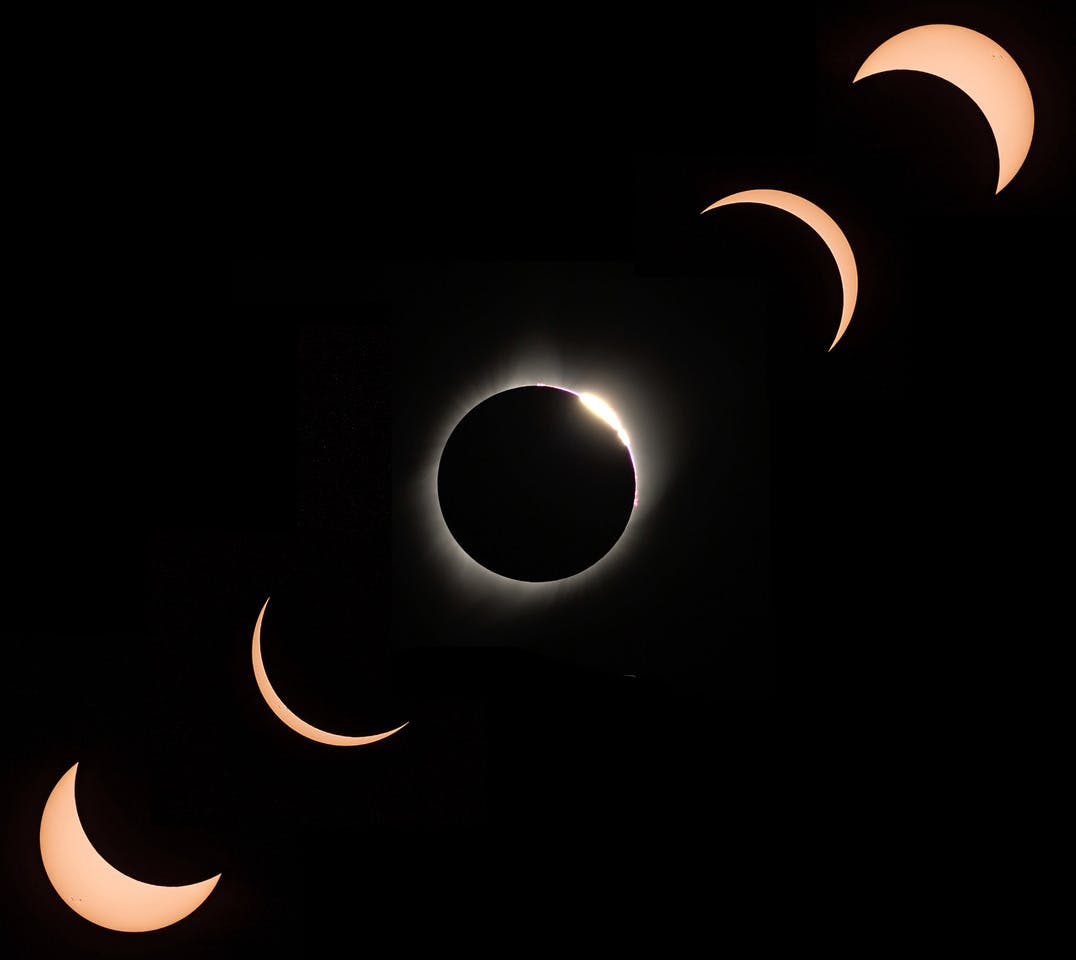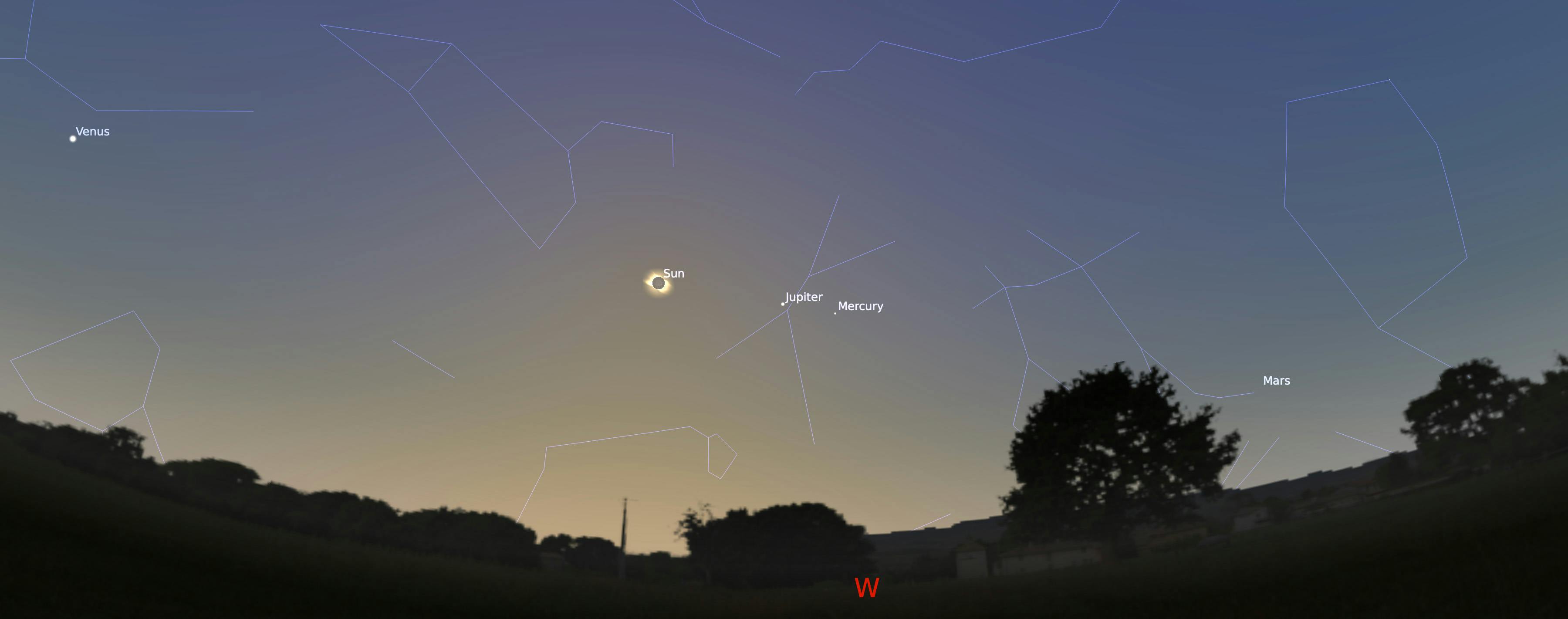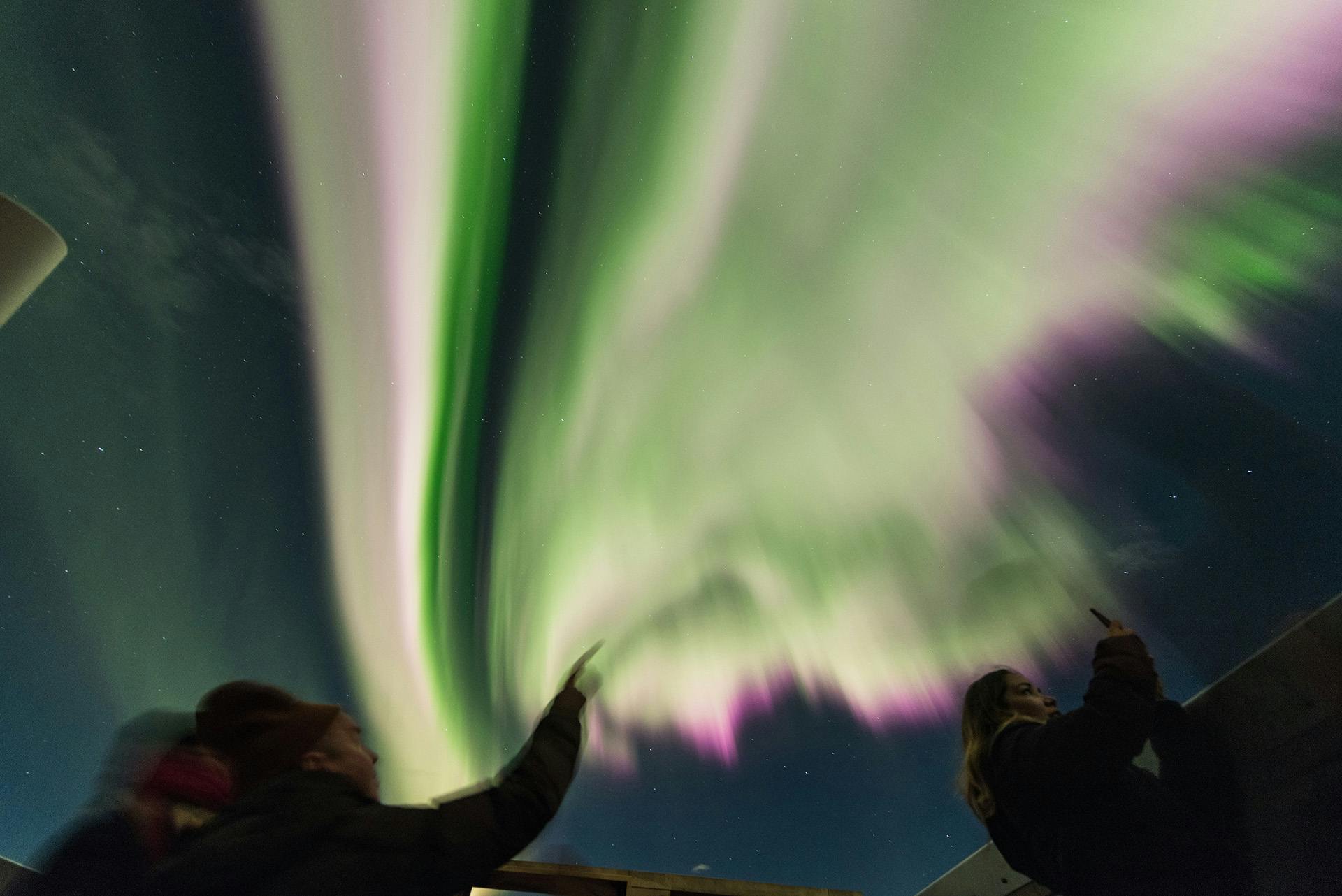

Partial begins: Wed, 12 Aug 2026, 16:47 UT
Totality begins: Wed, 12 Aug 2026, 17:48:19 UT
Maximum: Wed, 12 Aug 2026, 17:48:48 UT
Totality ends: Wed, 12 Aug 2026, 17:49:18 UT
Partial ends: Wed, 12 Aug 2026, 18:47 UT
Duration: 2 hours
Totality: ~1 minute
A total solar eclipse is a spectacular event. The total eclipse of August 12 2026 will cross the Arctic, Greenland, Iceland and Spain. In the northern part of North America, Scandinavia, Europe and west Africa, a partial eclipse will be visible. Maximum duration of the total eclipse is 2m 18s in the ocean just west of Látrabjarg, Iceland.
In Iceland, the narrow path of totality crosses the westernmost part of the country. The Moon’s umbral shadow first makes a landfall at Straumnes Lighthouse in Hornstrandir in the Westfjords of Iceland at 17:32:33 UT. There, totality lasts for 1m 57s while at Látrabjarg, you can enjoy the show a littler longer, for 2m 13s.
The Moon’s shadow races by at a speed of around 3400 km/h (2110 mph). It moves south to cross the Snæfellsnes peninsula, Reykjavík and the Reykjanes peninsula. The last part of the Moon’s umbra to leave the mainland of Iceland is Reykjanestá Lighthouse at 17:51:14 UT. There, totality lasts for 1m 47s.
The total duration of totality in Iceland is from 17:32:33 UT until 17:51:14 UT, for 18m 41s. Afterwards, the Moon’s umbral shadow races south across the Atlantic to reach Spain almost 35 minutes later, at 18:25:44.
A total solar eclipse is a rare sight from any given location, for most a once in a lifetime experience. This happens to be the first total eclipse visible from Iceland since June 30, 1954 and the first one to be seen from Reykjavík since June 17, 1433.

Next time the path of totality touches Iceland will be on June 26, 2196. Reykjavík area won’t see another total eclipse until May 26, 2245. So make sure you’re in the right spot.
Over the total eclipse’s total duration of 1h 36m, the 293 km wide umbra travels along a 8260 kilometres long strip on the Earth, from the Arctic, across Greenland, Iceland, tiny part of Portugal, northern Spain and ends at sunset in Mallorca. See the map on the right by Michael Zeiler of GreatAmericanEclipse.com.
A total solar eclipse is a grand visual spectacle. It’s exhilarating, even life-changing experience. It happens above you, around you and within you, to quote psychologist Dr. Kate Russo. It’s a chance to make the most out of a stunningly beautiful celestial event with family, friends and neighbours. Have loads of fun before, during and afterwards.
Enjoy the show.
Clear skies to everyone.
Speaking of clear skies. Remember that climate is what you expect, weather is what you get.
To maximise your chances for clear skies on the big day, at least partly clear, consult Iceland at Night website for cloud cover forecast and the website of the Icelandic Met Office. As the eclipse draws closer, we will make a special page on Weather prospects and weather info by our very own meteorologist, Dr. Elín Björk Jónasdóttir.
Below is a satellite view that shows fine conditions on August 12, 2023 in the western part of Iceland.

During totality, four planets might be visible: Venus in southwest, Jupiter and Mercury in west and perhaps Mars low in the northwest.
Some of the brighter stars will also be visible. During the eclipse, the Sun is in the constellation of Leo. Regulus, the brightest star in Leo, could be seen east (left) of the Sun and Castor and Pollux, brightest stars of Gemini, west of the Sun. Directly overhead, the stars of the Big Dipper might also be visible.

To watch and photograph the partial phase, solar eclipse glasses and solar filters are a must. You can find one in our store.
During totality however, remove your spectacles and watch with the unaided eye.

A cosmic coincidence is why total solar eclipses occur. The Sun is 400 times further away from Earth than the Moon, but also 400 times larger by diameter. Therefore, the Sun and the Moon appear to be about the same size in our sky or 1/2 degree. A perfect fit - but only if the alignment is perfect.
The Moon orbits the Earth about once a month. This journey brings the Moon close to the Sun at the time of “new moon” – when the Moon is between the Earth and the Sun.
The Moon’s orbit is tilted so most of the times, the Moon’s shadow either goes above or under the Earth. But when the alignment is perfect and the Moon is at the right distance from Earth, it can block the Sun completely, casting a cone shaped shadow at a narrow strip on the Earth. If you’re under it, inside the shadow of the Moon at the right spot at the right time, you’ll witness one of nature’s most incredible spectacle: A total solar eclipse.

The narrow strip is usually around 200 km wide. If you’re outside of it, you’ll only see a partial solar eclipse. Partial eclipses are beautiful, but nowhere near the dazzling beauty of totality. There’s no such thing as a 99% total. This 1% can make all the difference in the world. So make sure you’re in the right spot.
Duration of total solar eclipses varies from a few seconds up to roughly 7 1/2 minutes. The duration depends on how far away from the Earth the Moon is. If it’s close to it’s closest point, called perigee, the eclipse can be long.
If the Moon is at its furthest point, called apogee, no total eclipse is seen but an annular eclipse. Then, the Moon is just a little bit too far away to cover the Sun completely. Annular eclipses are beautiful. We last saw one in Iceland on May 31, 2003. Next chance for Icelanders is June 11, 2048.
The duration also depends on how close to the central line you are. Close to the edge, you'll see totality for only a few seconds but closer to the central line, you'll witness it for a minute or two.
A total solar eclipse is rare sight from any given location on Earth. Calculations by Belgian astronomer Jean Meeus reveal that, on average, one has to wait roughly 375 years for an eclipse to occur where you live.
A possibility, for sure, but very unlikely.

The sky doesn’t get dark enough for (faint) aurorae to be spotted. Second, on average, the likeliest time to see aurora is around 23:00 (11 pm), near magnetic midnight.
However, the eclipse occurs when the Sun should be quite active. If it sent fast moving solar wind, a coronal mass ejection, towards the Earth two or three days in advance, it might trigger a geomagnetic storm. If a geomagnetic storm occurs and bright auroras happen, it might be faintly visible. This would actually have been the case on March 24, 2024 when a severe Kp-8 geomagnetic storm occurred in the afternoon.
Mid-August is the early start of the aurora season in Iceland. So if you stay few more days after the eclipse, you have a great chance of catching the Northern Lights.
Visit Icelandatnight.is for aurora, cloud cover and space weather information for Iceland.